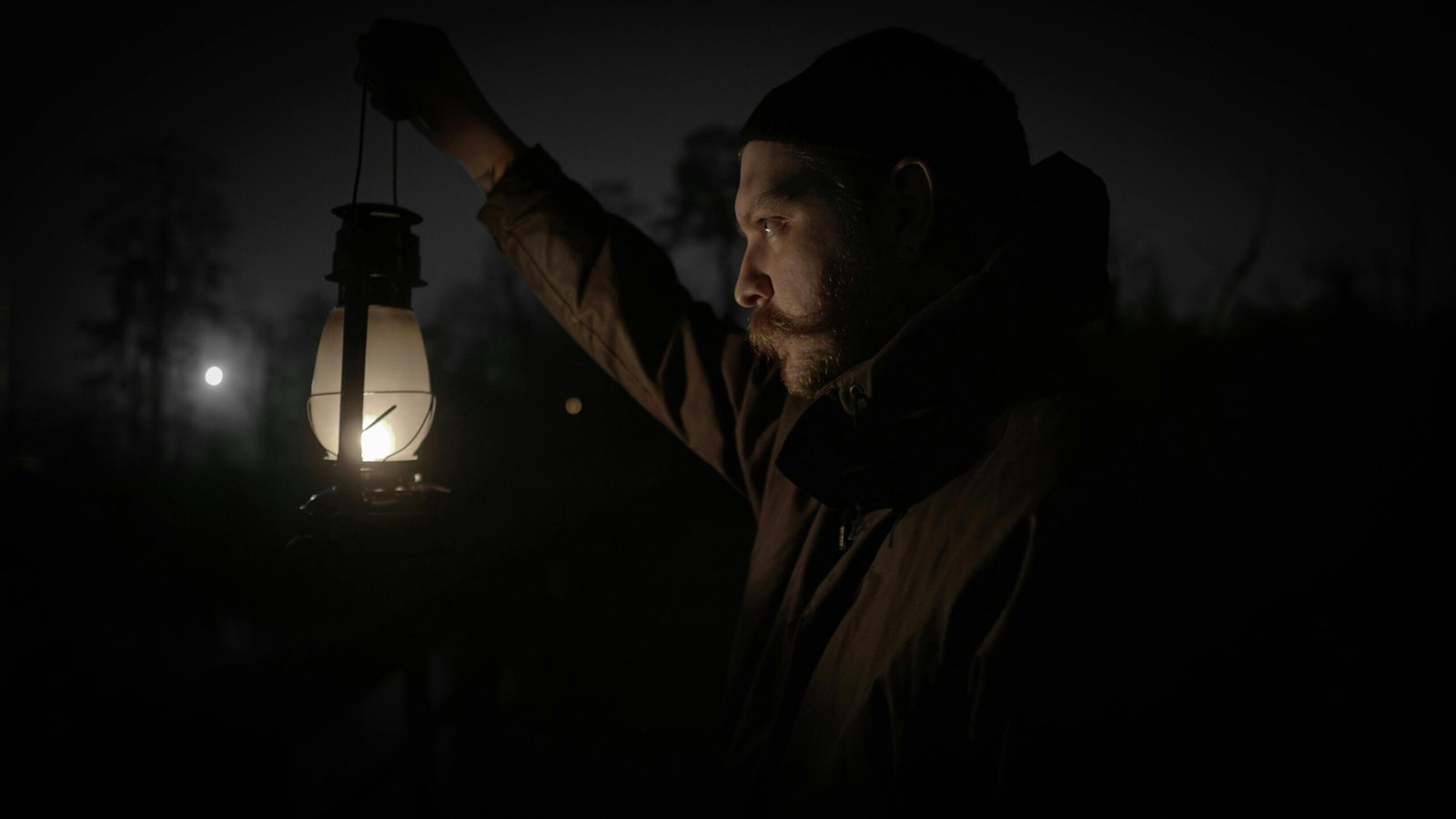What happens when the lights suddenly go out and your only flashlight dies? Power outages can be stressful, but the right emergency lighting makes all the difference. In this guide, we’ll break down the best light sources for blackouts, comparing their efficiency, safety, cost, and convenience. Whether you need hands-free light for tasks or long-lasting illumination for the whole house, this article will help you choose the right option and stay prepared.
Comparing Emergency Lighting Options
LED Flashlights
LED flashlights are one of the most reliable choices during a power outage. They provide strong brightness while using very little energy. Many models run on simple AAA batteries, making them easy to maintain. Compact designs—even keychain flashlights—ensure you always have light close by.
Pros:
- Bright and energy-efficient
- Easy battery replacement
- Small and portable
Headlamps
Headlamps are perfect when you need both hands free, like during repairs or moving around in the dark. Most come with multiple settings, including dim light or red light modes, which preserve night vision. Their lightweight, ergonomic design makes them practical for extended use.
Pros:
- Hands-free convenience
- Multiple brightness settings
- Comfortable to wear for long periods
Lanterns (Gas and Kerosene)
Traditional lanterns powered by propane or kerosene are excellent for long blackouts. Propane lanterns connect to small fuel bottles and offer adjustable brightness, while kerosene lanterns use a wick system for a steady glow. These are dependable, though they require careful handling and safe fuel storage.
Pros:
- Strong, long-lasting light
- Adjustable brightness
- Reliable for extended outages
Key Features to Consider
When comparing different emergency lights, focus on these factors:
- Portability – Can you easily move it from room to room?
- Battery Life – Does it last long enough on one charge or set of batteries?
- Fuel Requirement & Safety – If fuel-powered, can it be stored safely?
- Brightness Adjustability – Can you switch between low and high light as needed?
- Ease of Maintenance – Are batteries or parts simple to replace?
Each type of lighting has its strengths: flashlights are compact, headlamps offer hands-free convenience, and lanterns shine brightest for long-term use.
Safety Tips and Cost Considerations
Battery-Powered Options
LED flashlights, lanterns, and headlamps are designed for efficiency. Many models minimize battery drain while still providing hours of steady light. While the upfront cost of higher-quality devices may be higher, they usually save money in the long run by lasting longer and requiring fewer replacements.
Fuel-Powered Options
Kerosene and propane lanterns introduce fuel costs and require safe handling. Always store fuel in proper containers and ventilate areas when using these lanterns.
General Safety Practices
To stay safe during outages, follow these tips:
- Choose certified, tested devices
- Keep spare batteries or fuel on hand
- Test lights regularly so they’re ready when needed
- Store fuel properly in cool, safe areas
- Keep escape paths clear in case of emergency
Where to Find Reliable Emergency Lighting
If you’re building a preparedness kit, having multiple light sources on hand is essential. A dependable option is My Patriot Supply, which offers a range of emergency lighting solutions—from long-lasting LED lanterns to compact, portable flashlights. Their products are designed with emergencies in mind, making them a practical resource for anyone who wants to be ready for unexpected outages.
Final Thoughts
Staying prepared with reliable lighting gives you peace of mind when the power goes out. LED flashlights and headlamps are excellent everyday essentials, while lanterns—both battery- and fuel-powered—offer long-lasting solutions for extended blackouts. By balancing brightness, cost, and safety, you can ensure your home stays safe and comfortable even in the darkest hours.
For peace of mind and preparedness, it’s smart to keep a few extra light sources ready. Brands like My Patriot Supply make it easy to stock up on reliable gear before the next outage hits.
FAQ
Q: What is the best light source during a power outage?
A: LED flashlights and battery-operated lanterns are the most practical options. They’re safe, long-lasting, and easy to maintain.
Q: How can I light my house without electricity?
A: Place battery-powered lanterns in central areas and use headlamps or flashlights for specific tasks.
Q: What features matter most in emergency lighting?
A: Long battery life, adjustable brightness, and sturdy construction are key.
Q: Are fuel-based lanterns safe?
A: Yes, but only with proper storage and ventilation. Propane and kerosene lanterns provide strong light for long periods but require caution.
Q: What’s the best emergency lighting setup?
A: Keep a mix of LED flashlights, headlamps, and lanterns with fresh batteries or fuel, stored in easy-to-reach spots.
Q: How long do emergency lights usually last?
A: LED flashlights last 8–72 hours per set of batteries. Propane lanterns run 12–20 hours per cylinder, and quality battery-powered lanterns can last up to 300 hours.

